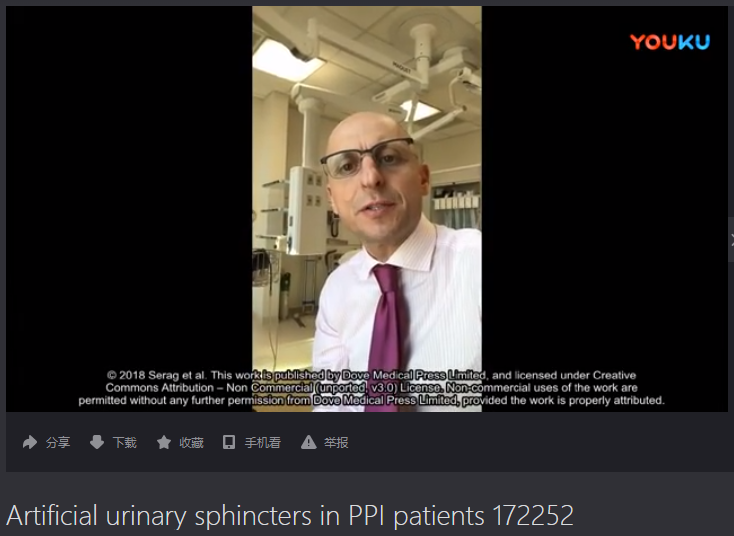9 1 2 3 6
论文已发表
注册即可获取德孚的最新动态
IF 收录期刊
- 2.6 Breast Cancer (Dove Med Press)
- 3.9 Clin Epidemiol
- 3.3 Cancer Manag Res
- 3.9 Infect Drug Resist
- 3.6 Clin Interv Aging
- 4.8 Drug Des Dev Ther
- 2.8 Int J Chronic Obstr
- 8.0 Int J Nanomed
- 2.3 Int J Women's Health
- 3.2 Neuropsych Dis Treat
- 4.0 OncoTargets Ther
- 2.2 Patient Prefer Adher
- 2.8 Ther Clin Risk Manag
- 2.7 J Pain Res
- 3.3 Diabet Metab Synd Ob
- 4.3 Psychol Res Behav Ma
- 3.4 Nat Sci Sleep
- 1.9 Pharmgenomics Pers Med
- 3.5 Risk Manag Healthc Policy
- 4.5 J Inflamm Res
- 2.3 Int J Gen Med
- 4.1 J Hepatocell Carcinoma
- 3.2 J Asthma Allergy
- 2.3 Clin Cosmet Investig Dermatol
- 3.3 J Multidiscip Healthc

Artificial urinary sphincters for treating postprostatectomy incontinence: A contemporary experience from the UK
Authors Serag H, Bang S, Almallah YZ
Received 25 April 2018
Accepted for publication 26 June 2018
Published 4 September 2018 Volume 2018:10 Pages 63—68
DOI https://doi.org/10.2147/RRU.S172252
Checked for plagiarism Yes
Review by Single-blind
Peer reviewers approved by Dr Justinn Cochran
Peer reviewer comments 2
Editor who approved publication: Dr Jan Colli
Objectives: To report a real-time contemporary practice and outcome of artificial urinary sphincter (AUS) in patients with postradical prostatectomy urinary incontinence (PPI) in the UK.
Methods: A retrospective observational study of patients who underwent AUS implantation (AMS 800) from 2007 to 2013. Data were collected on patients’ demographics, infection and erosion rate, mechanical failure, reoperation, and continence rates. The study strictly included patients with postradical PPI only. Minimum follow-up was 15 months.
Results: Eighty-four AUSs were implanted over a period of 6 years. Patients’ age ranged between 51 and 78 (median 69, mean 69.25) years. Median follow-up was 37 months, mean 39 months, and range 15–92 months. Among the 83 follow-up patients, 38.5% (32/83) reported that they were completely dry with no pads; 42.2% (35/83) of patients were socially continent (using 1 pad/day) and 19.3% (16/83) using ≥2 pads /day. One patient was lost to follow-up. Reoperation rate was 13.25% (11/83), including nine mechanical failures (10.8%). Two implant infections (2.4%) required explantation, out of which one had erosion (1.2%). Bladder overactivity developed in 6% of patients. Of the 83, 15 (18%) had pelvic radiotherapy.
Conclusion: The implantation of AUS in patients with post-PPI has lower complications and reoperation rates than historical impression painted in the literature. This can be beneficial in counseling as well as during the education process of patients going through the decision process for prostate cancer treatment. Furthermore, these figures can add to our quest to increase the awareness of the success of anti-incontinence surgery among patients.
Keywords: Post-prostatectomy urinary incontinence, artificial urinary sphincter, male incontinence, radical prostatectomy complications, outcomes of artificial urinary sphincter, incontinence surgery counselling
摘要视频链接:Artificial urinary sphincters in PPI patients
